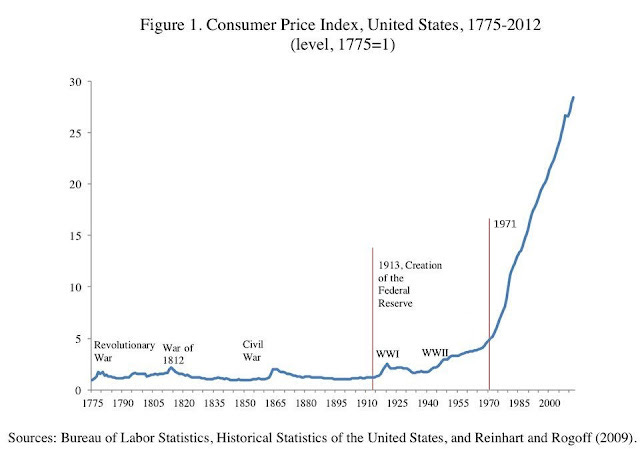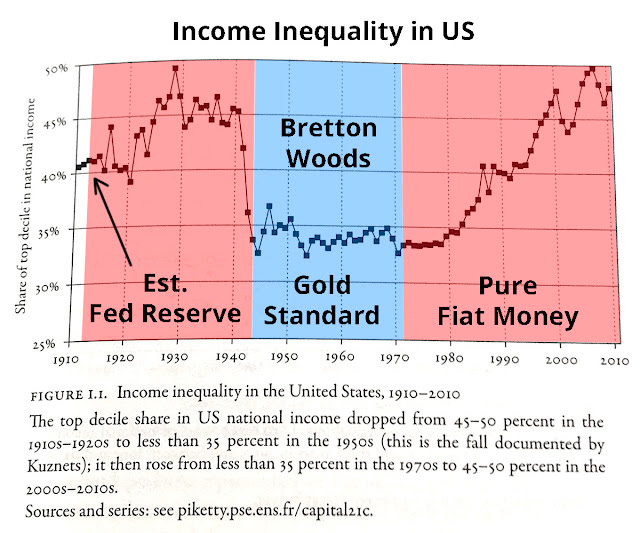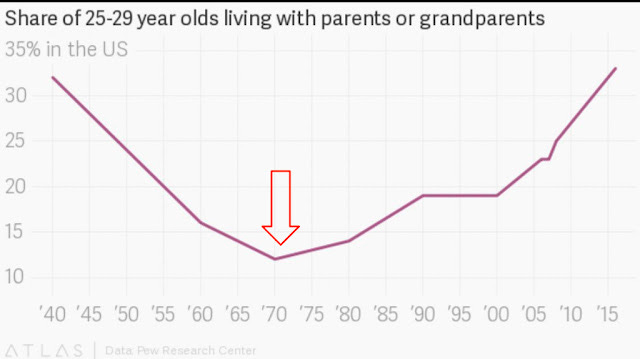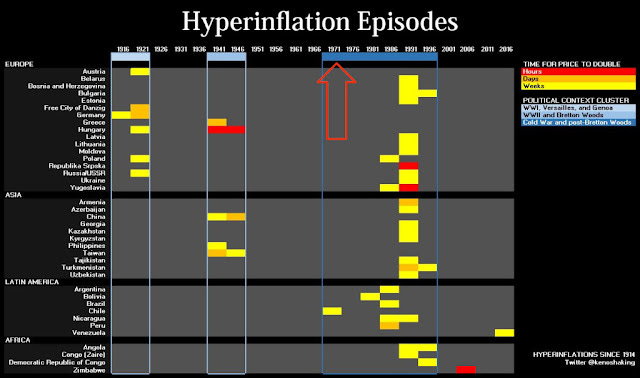1971: The Beginning of the End--Massive Monetary Disorder
In 1970, US debt was $275 Billion. It took 188 years to achieve that. Now, the US is selling that amount of debt every month, or even in a week!
Worse, it's just recently selling most of it to the US Federal Reserve (another part of the government). That's called debt monetisation and is the stuff of the Weimar Republic except all these money transactions are only electronic accounting transactions that create bank reserves rather than issuing paper money.
We really have just "funny money" (fiat money) not based on anything but confidence and faith in the government. How long do you think that can last? It's already coming to an end as investors are chasing hard assets like crazy now; like housing, gold, stocks. Inflation is raging in those assets.
Background
After WWII, the US was the only major economy that emerged from the war with prosperity and a robust economy. We also had huge gold reserves since we had enjoyed huge trade surpluses with the world before and during WWII. The Bretton Woods arrangement was established in 1944 among the Allied powers where the US dollar, backed by gold, was the de facto global monetary standard. And it worked very well.
But in 1971, Nixon ended this monetary arrangement which ended gold-backed money. It was done at that time to enable the government to run deficits to fund the Viet Nam war without raising taxes to pay for it. As an immediate result, the US dollar plunged in value and our national debt and inflation began to skyrocket. A falling dollar soon caused the oil exporting countries to sharply raise oil prices in 1974 igniting a budgetary and inflationary spiral.
Then came decades of huge, unsustainable global imbalances in trade and debt, inflation, falling living standards, inequality, monetary disorder, instability, the rise of China, the Petro-dollar, endless wars, the massive military-industrial complex, a leviathan surveillance state, mega corporate monopolies, massive US government growth, government malfeasance and corruption, national de-industrialization, wealth inequality, the Eurodollar rise and fall, widespread US intervention and manipulation in nearly every global nation -- continuing to the present day. All fueled by easy (unsound) money and out-of-control spending.
It didn't have to be that way. Those persistent budget and trade imbalances over the past several decades could never have happened with "sound" money, as the deficit nation would have seen a loss of gold (money) that would have slowed the economy and reduced imports to a balance with exports. And debt creation would have been severely limited since new money would have to be backed by gold-- and the quantity of gold is limited. Exchange rates would have been very stable too. Trade wars, kinetic wars, trade and budget deficits don't exist with a gold standard. That is the beauty of a world-wide gold standard. That's also why gold standards rarely last long.
Instead debt, budget deficits, trade deficits, financial asset inflation, repeated bubbles and the resulting instability (collapsing bubbles) and deep recessions have serially eroded our economy and culture since 1971 really, but especially since 2001. The result, in part, is that our society, our culture, our civic order, our work ethic, our moral bearings have all decayed and diminished. Our social contract has also been torn asunder. It's not just in the US, but all over the world. All this is basically started with Nixon's abandonment of the gold standard: the adoption of unsound money!
(Also see Extremes of Unsound Money and Finance, Rising Risks of Financial and Economic Chaos, Rising Risks of Financial and Economic Chaos, Part 2, The Federal Reserve is the Root of All Evil, Modern Civilization As We Know It Is At Risk and We're Reaching the End of the Road.)
Below are a number of charts and graphs to show just how pivotal the change to fiat money really was. It's enormous, pivotal and undeniable.
Unending Debt, Budget and Trade Deficits, and Declining Living Standards
Income Inequality
Income Inequality Since 1913 to 2017






















